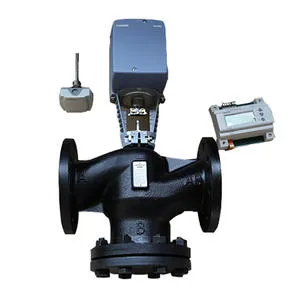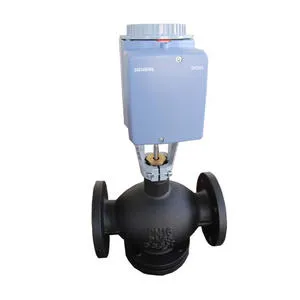The thermostatic valve, or temperature control valve, is a critical component used to maintain or regulate temperature in a variety of systems. Whether it is a home heating system, an industrial process or a car cooling system, thermostatic valves play a role in keeping the system operating at an optimal temperature. But, How does temperature control valve work? Now let’s discuss the working principle of the temperature control valve in detail.

Basic structure and functions
Thermostatic valves usually consist of a valve body, a temperature sensing element (such as an expansion chamber), an actuator (such as a spring or piston), and a regulating mechanism. Its basic function is to automatically adjust the flow of fluid when the fluid temperature reaches a preset value, thereby controlling the heat or cold flowing through the system and keeping the system temperature stable.
The function of temperature sensing element
The core part of the temperature control valve is the temperature sensing element, which contains substances that are easy to expand, such as liquid or gas. When the temperature of the medium flowing through the valve changes, the material in the temperature sensing element will expand or contract due to the temperature change. This physical change is converted into mechanical movement, which drives the valve to open or close.
Adjustment of the actuator
The actuator responds to changes in the temperature sensing element. It adjusts the switching components inside the valve through a series of mechanical linkages, such as spring pressure or piston thrust. When the temperature sensing element detects an increase in temperature, it will cause the actuator to move the valve in the closing direction, reducing the flow of fluid and thereby lowering the temperature of the system. Conversely, when the temperature drops, the actuator causes the valve to open, increasing fluid flow and causing the system temperature to rise.
Fine control of the regulating mechanism
The regulating mechanism allows the user or automated control system to set specific temperature thresholds. This means that the thermostatic valve can adjust its sensitivity in response to temperature and the degree to which the valve opens as needed. This adjustment capability allows thermostatic valves to achieve precise temperature management in different applications.
Automation and feedback
Many modern thermostatic valves have automated features that allow them to be connected to electronic control systems for more precise temperature regulation. These systems typically include temperature sensors and controllers that continuously monitor and adjust to ensure that the temperature remains within a set range. Once it detects that the temperature deviates from the preset value, the control system will send a signal to the temperature control valve to quickly adjust the fluid flow to return to the ideal temperature.

The above introduction to you is "How does temperature control valve work". The temperature control valve is an ingenious device that automatically controls the flow of fluid through the physical changes of the temperature sensing element and the mechanical adjustment of the actuator to maintain the system in a constant temperature. Its working principle is simple and efficient, and it can operate without external energy. It is a key technology to maintain the safe operation of industrial processes, home comfort and mechanical equipment. With the development of automation and intelligent control technology, the accuracy and reliability of temperature control valves will be further improved, providing more complete solutions for various temperature-sensitive application fields.